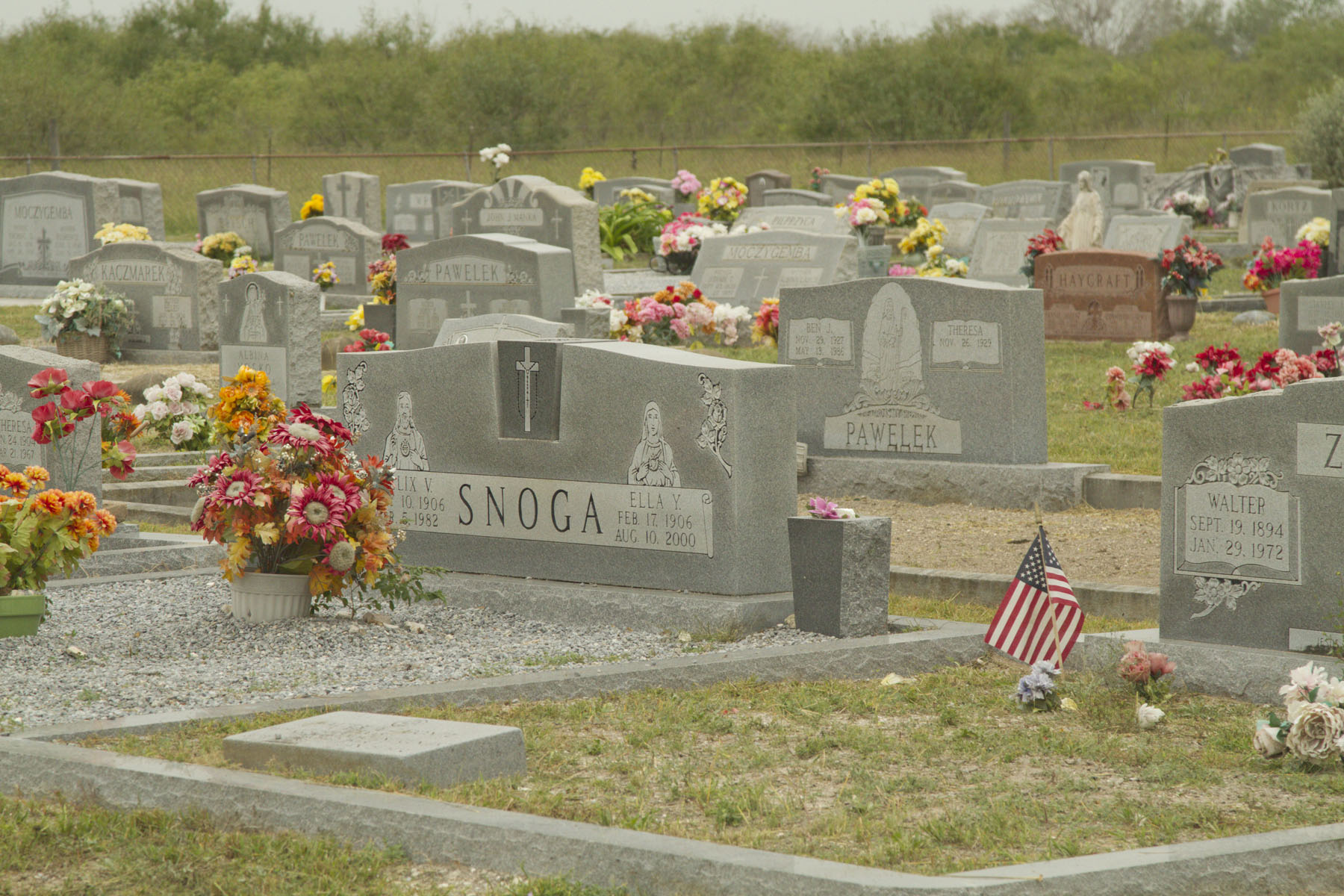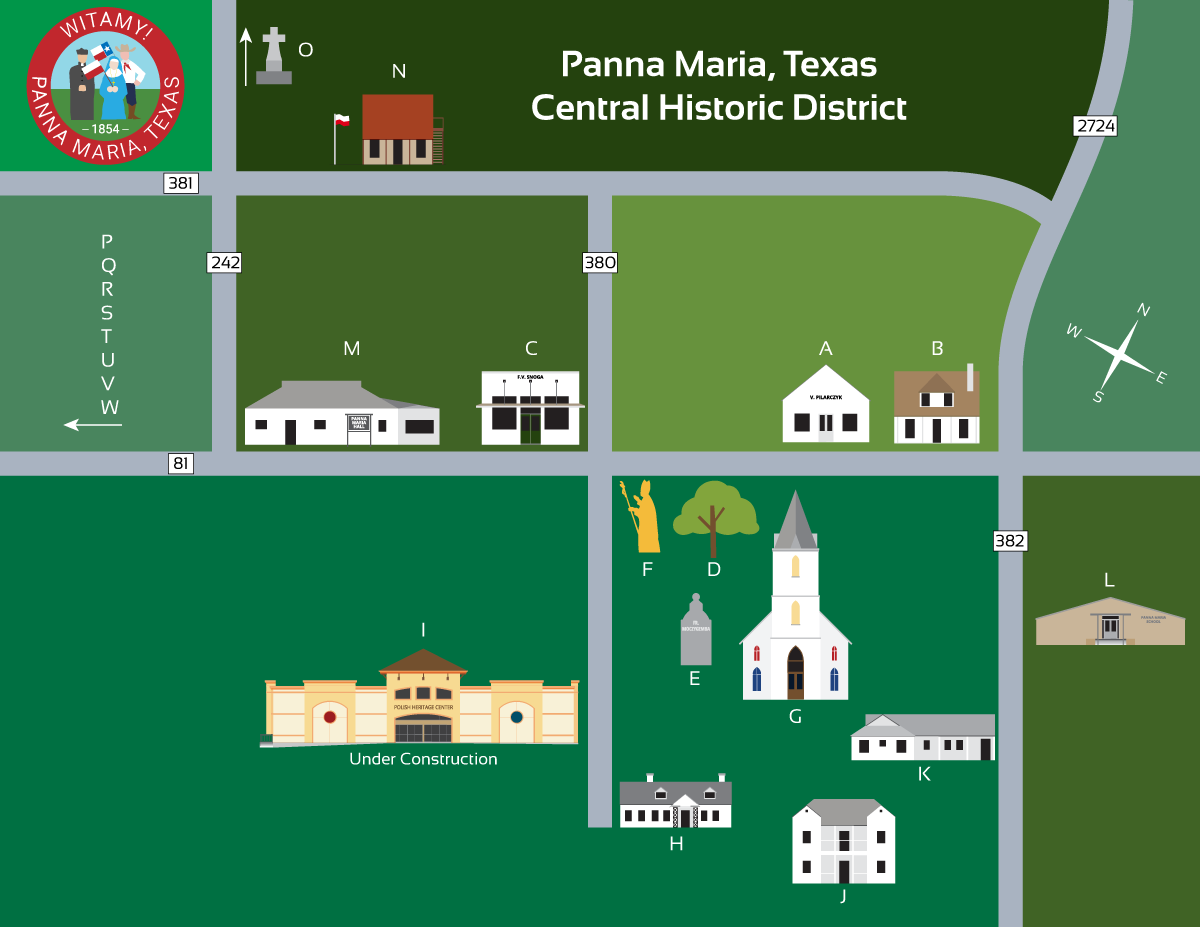Pilarczyk's Store/Visitors' Center

(open to visitors)
August Moczygemba House/Mika House

(exterior viewing only)
John Twohig’s Store/Snoga Store
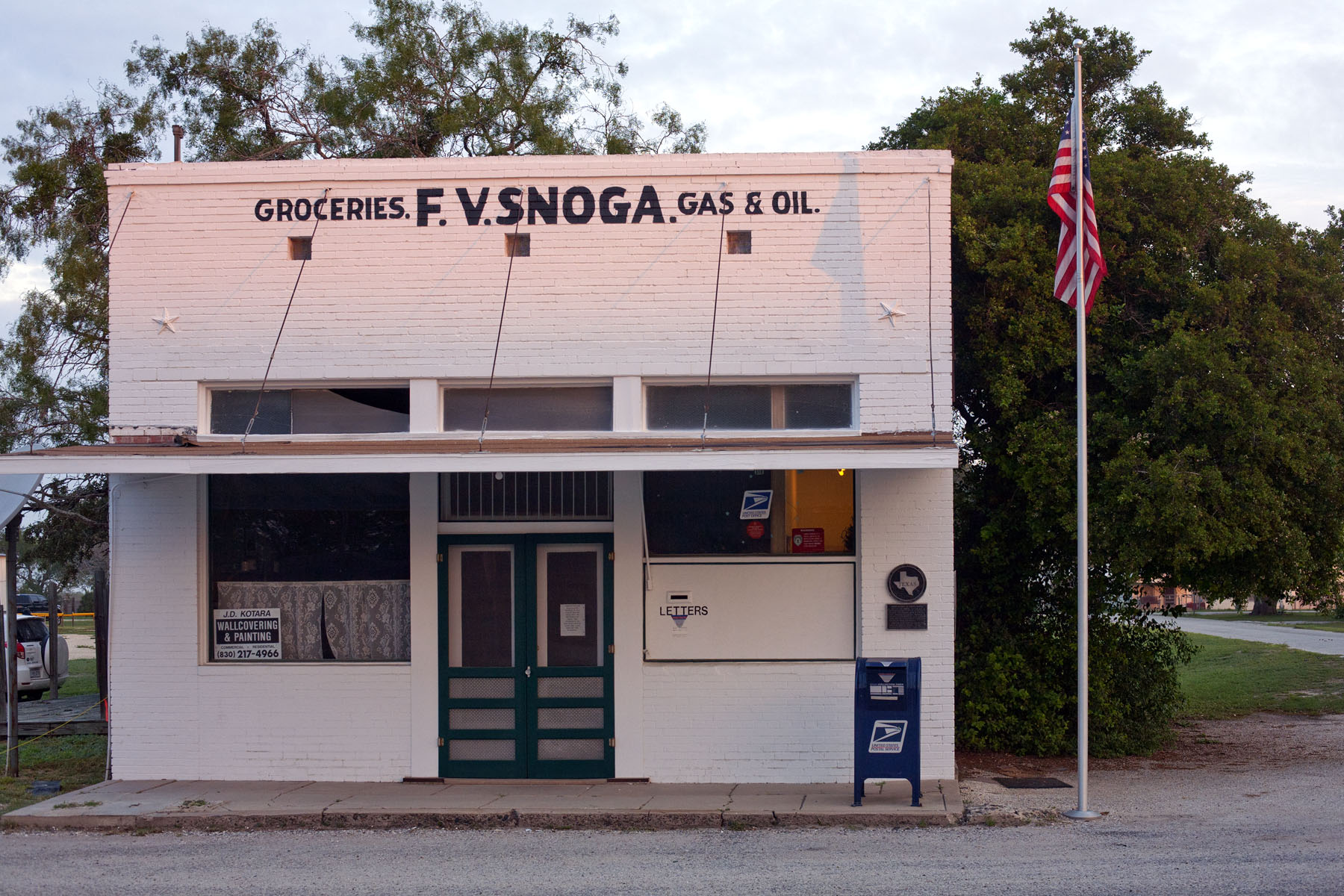
(Exterior viewing only)
Historic Oak Tree
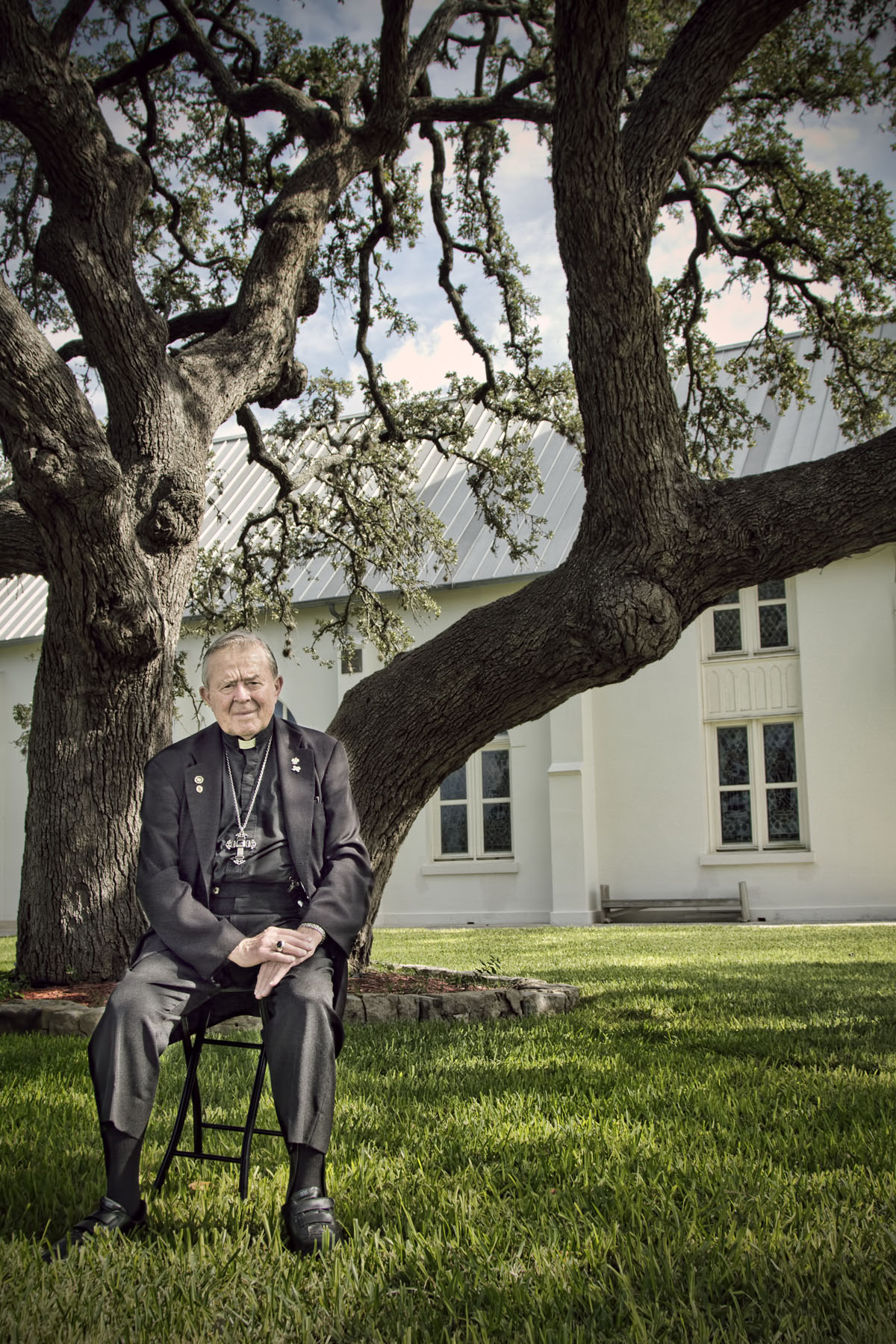
Fr. Leopold Moczygemba Marker
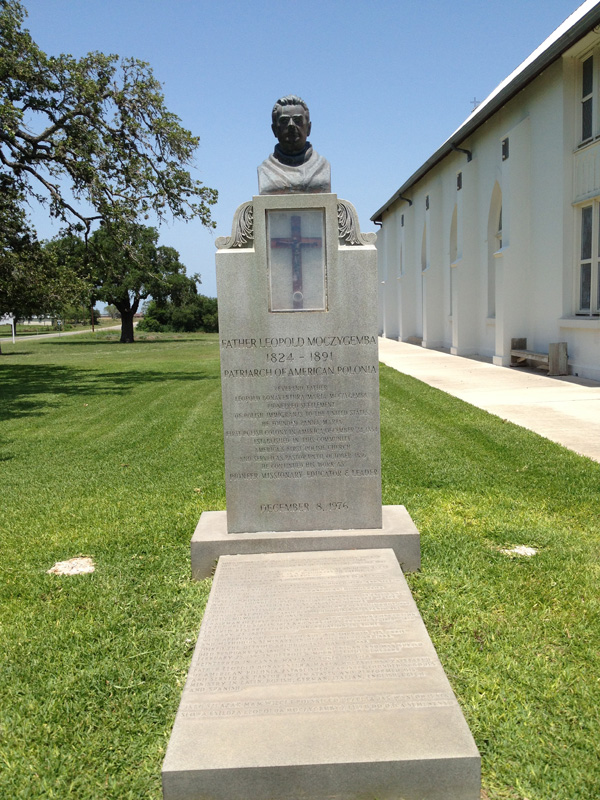 ,
, 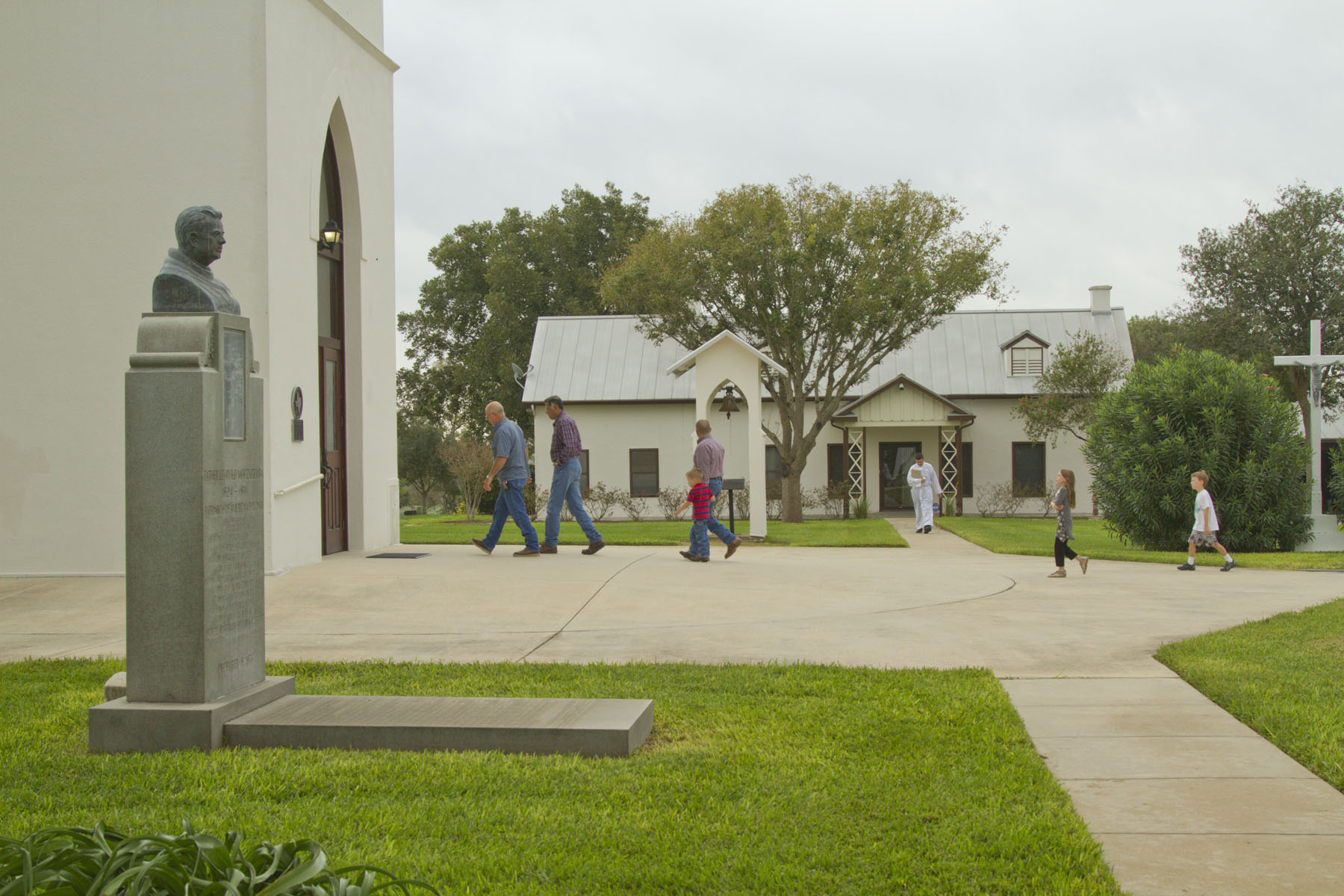
Statue of Pope John Paul II
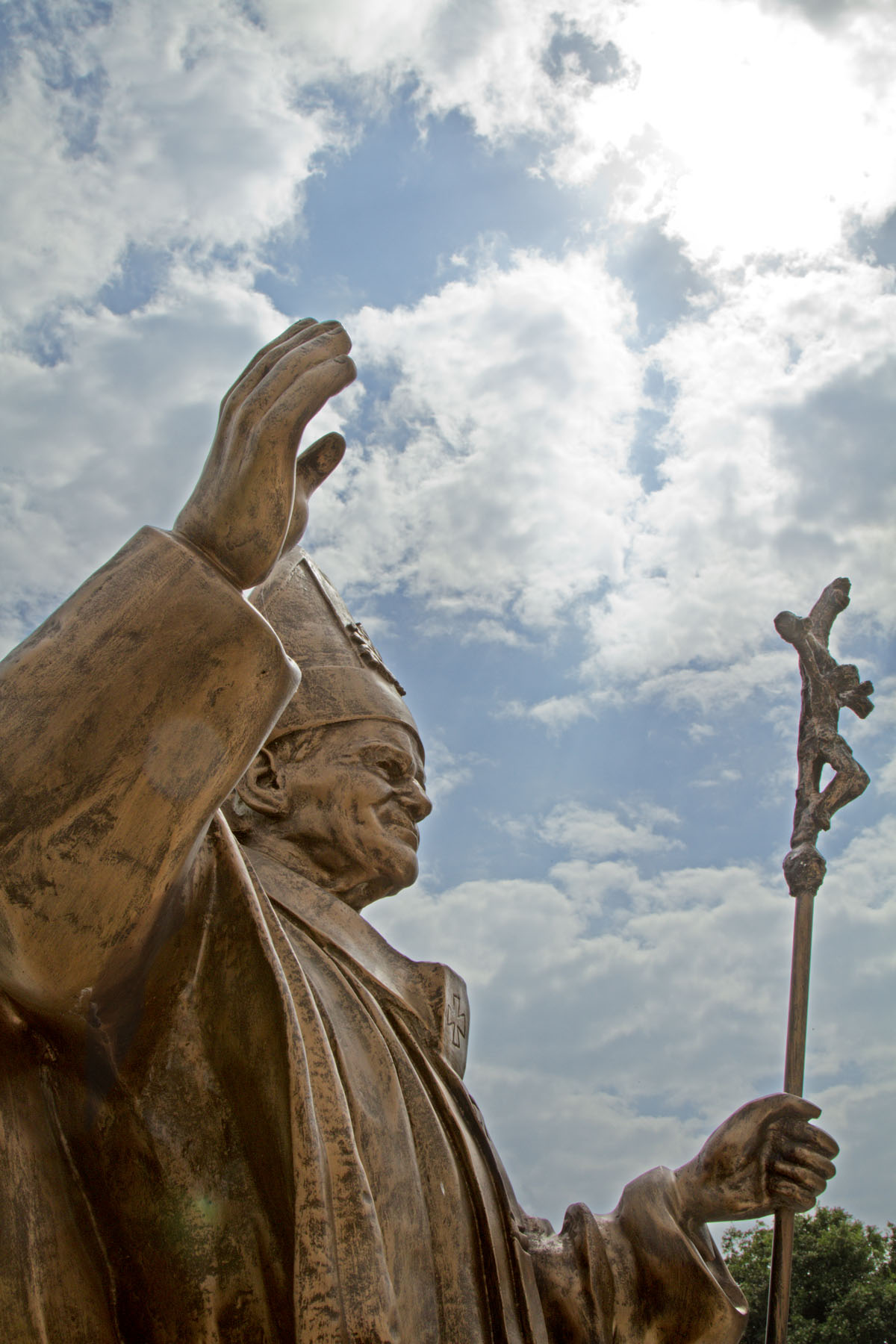
Immaculate Conception Catholic Church
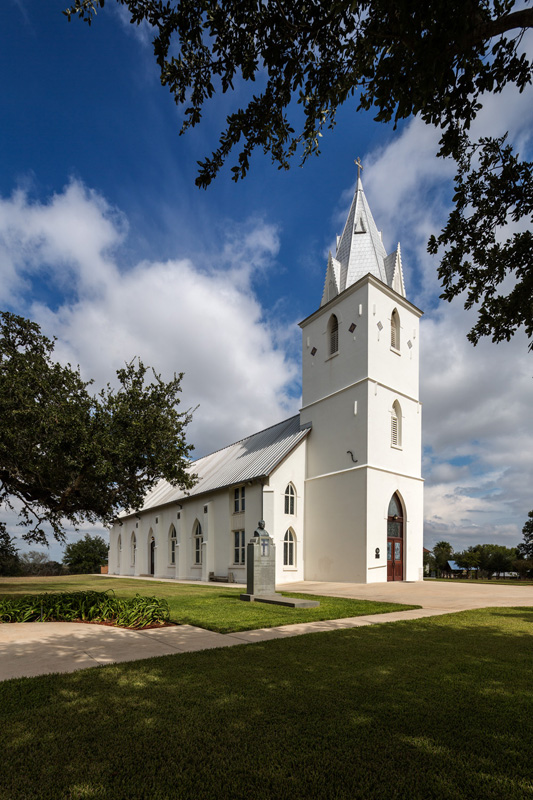 ,
, 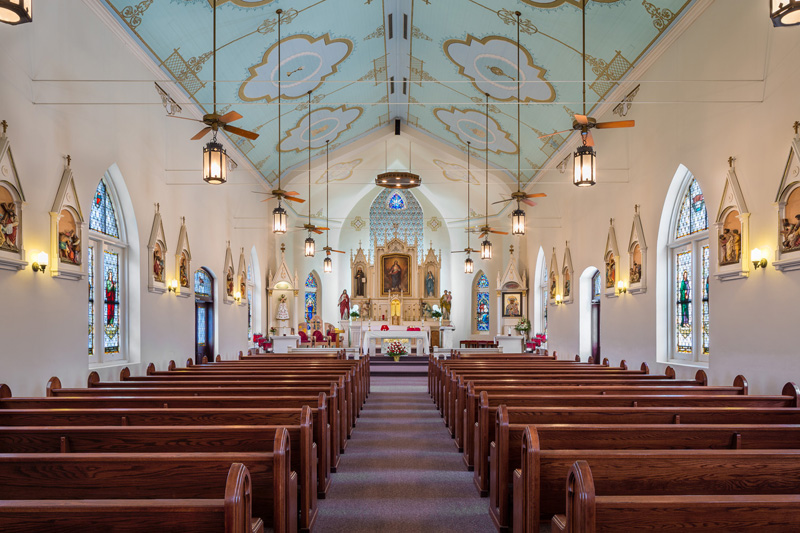 ,
, 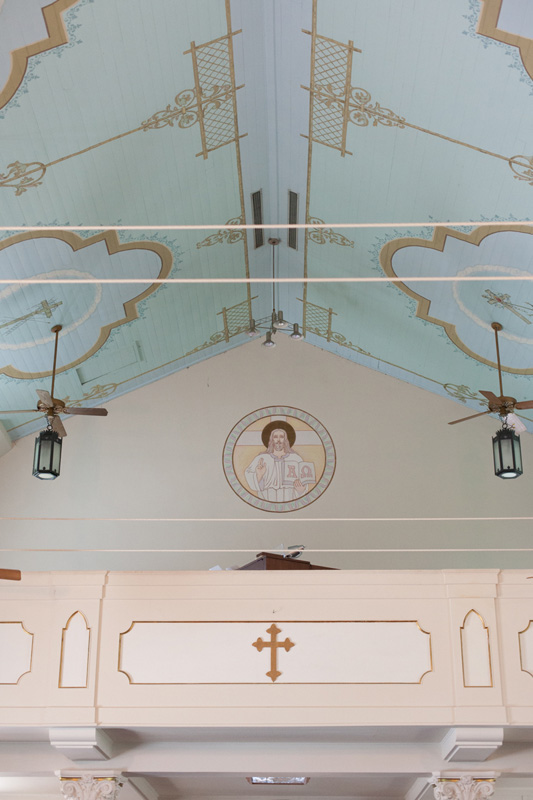
Immaculate Conception of the Blessed Virgin Mary Catholic Church
In 1855, less than a year after arriving, the founders of Panna Maria built their first church next to the Oak Tree and dedicated it to the Virgin Mother. The first church was destroyed by lightning in 1875. The present church was completed in 1877 and was enlarged in 1937. The two-story, Gothic revival, stuccoed stone structure is dominated by the 100-foot central entrance tower on the southwest façade. Divided into three segments by horizontal molding, each level contains narrow lancet apertures. The third level is embellished on each face by diamond-shaped motifs of inlaid tiles. The simply detailed interior is defined by a central nave separated from the alter by a large pointed arch. Two colors of blue, the traditional colors of Panna Maria, predominate the interior. On one side of the alter is a mosaic of Our Lady of Czestochowa The Black Madonna. Recognizing Panna Maria as the oldest Polish settlement in the United States, President Lyndon Johnson presented the mosaic in 1966 in commemoration of the millennium of Polish Christianity. During a 20th century renovation, it was discovered that a false ceiling hid a painted ceiling in the sanctuary. The ceiling and church have been beautifully restored and can be viewed by visitors to Panna Maria.
(Open to visitors)
Parish Rectory

(Exterior viewing only)
Polish Heritage Center at Panna Maria

www.polishheritagecenterpannamaria.org
St. Joseph School Museum
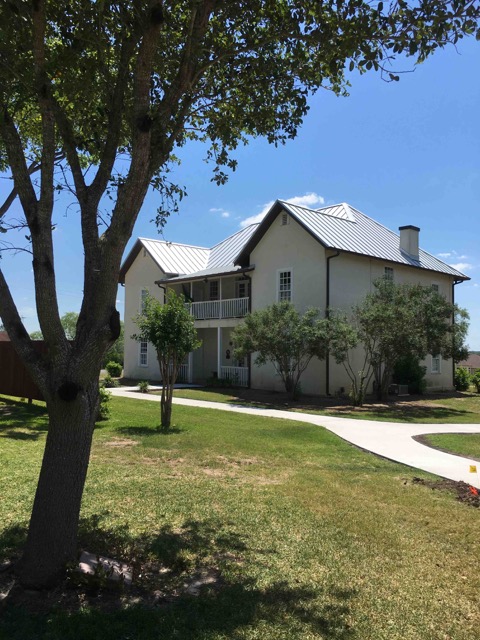
(Open to visitors)
Former Convent (Sisters of the Incarnate Word)
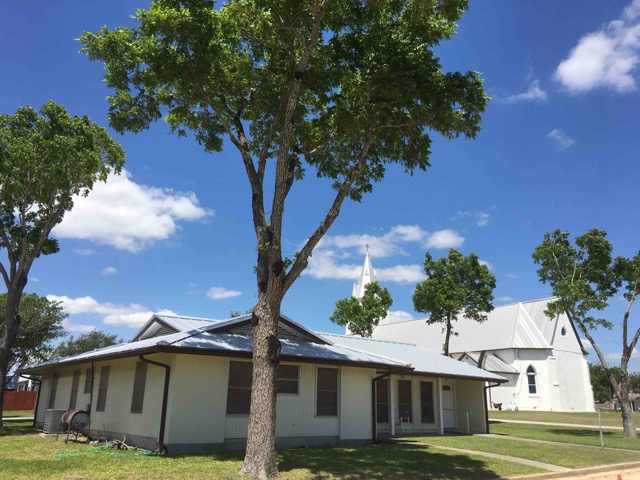
Former Convent of the Sisters of the Incarnate Word
(Exterior viewing only)
Panna Maria Elementary School
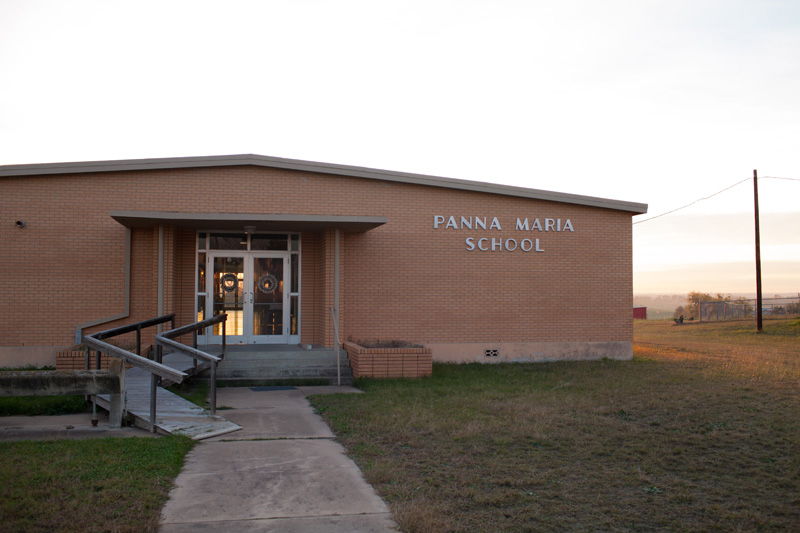
(Exterior viewing only)
Panna Maria Hall
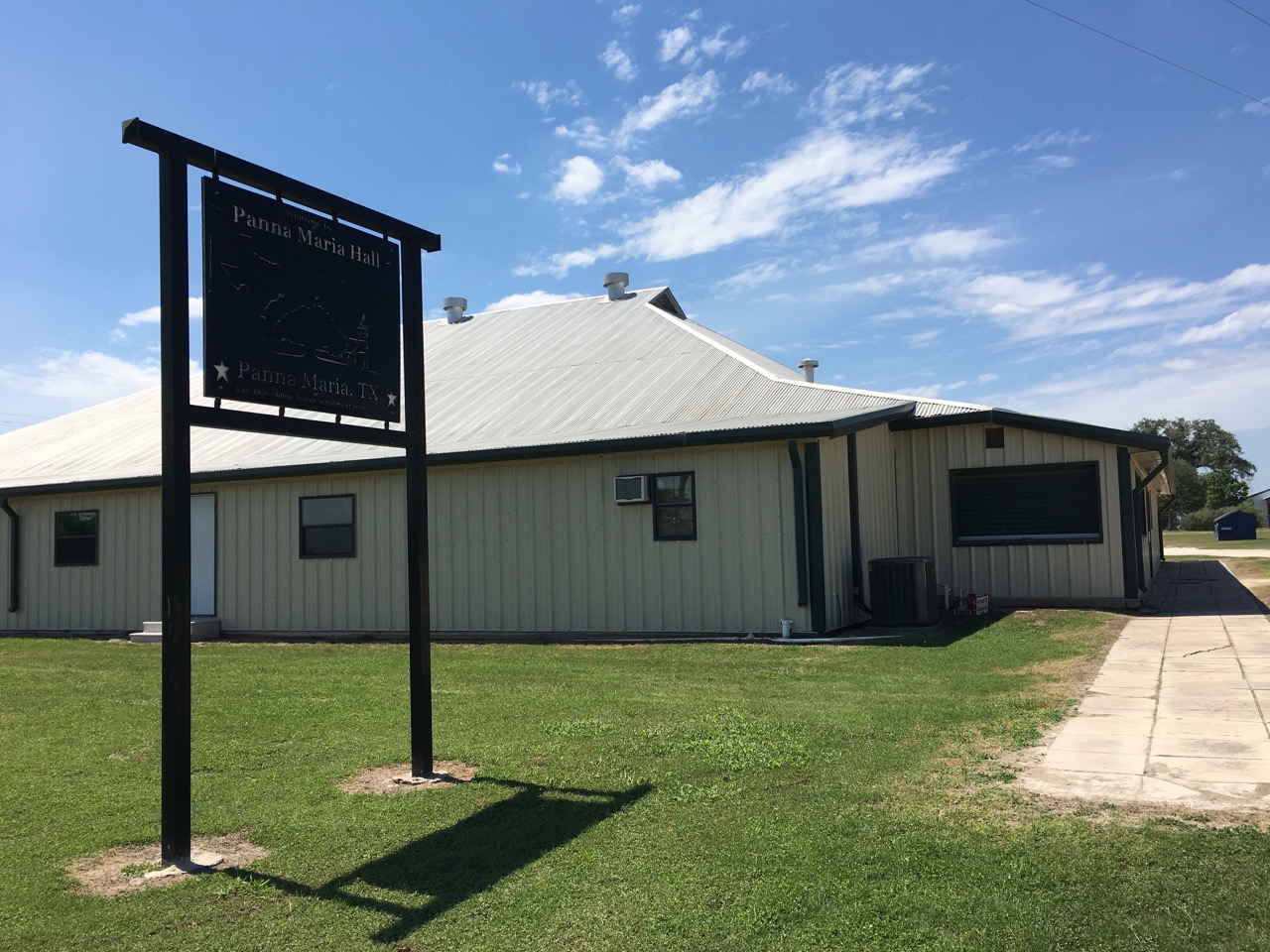
Panna Maria Hall is the site for many community and private events. It is the location for the annual Homecoming Turkey Dinner held on the second Sunday in October.
(Exterior viewing only)
John Gawlik House
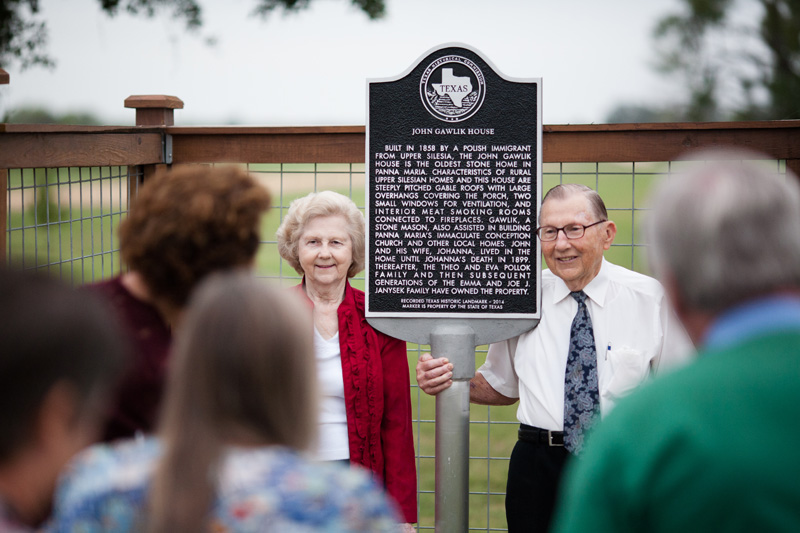 ,
, (Exterior viewing only)
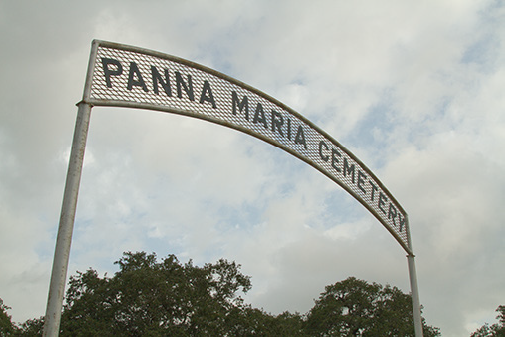 ,
, 